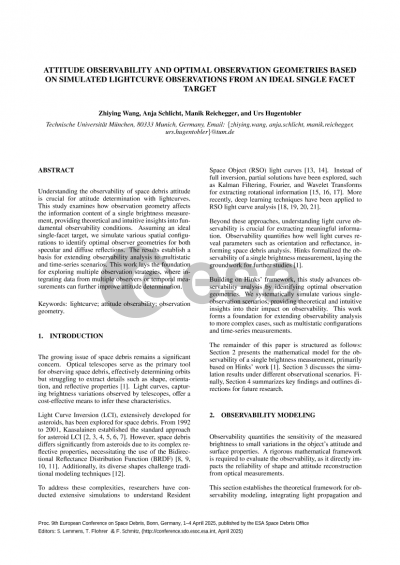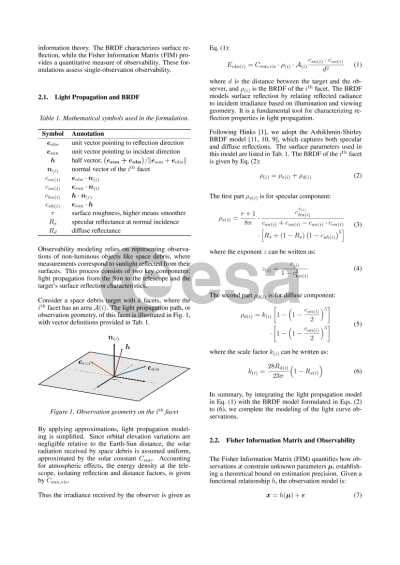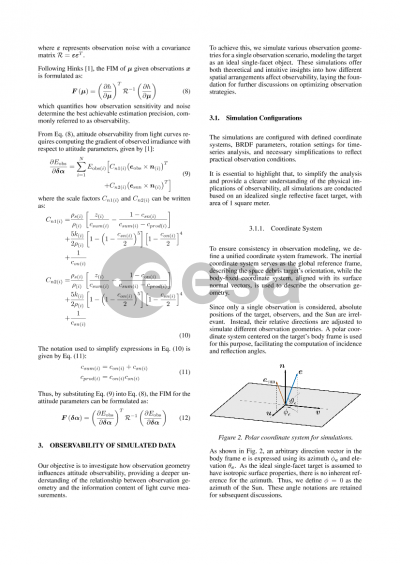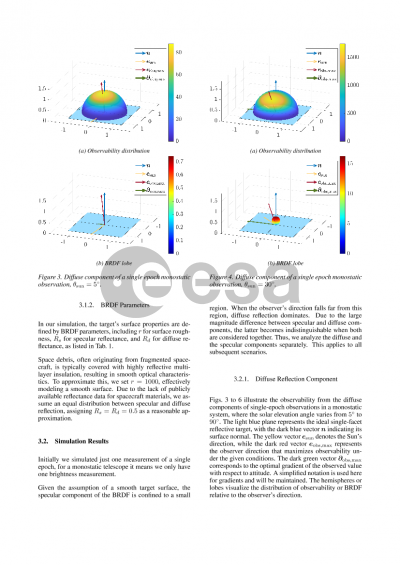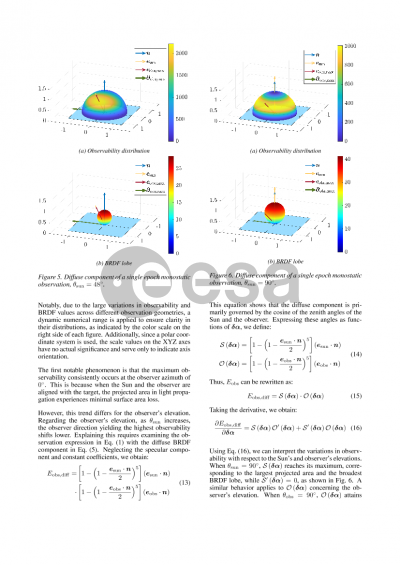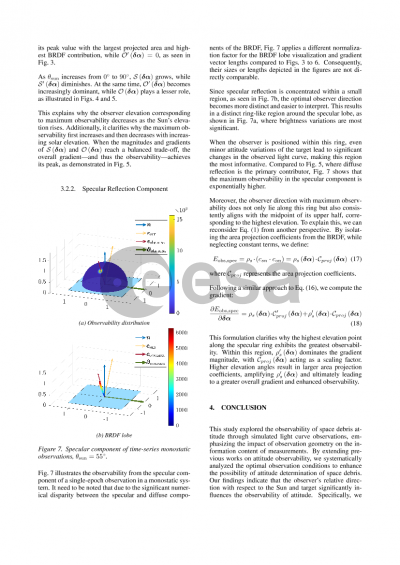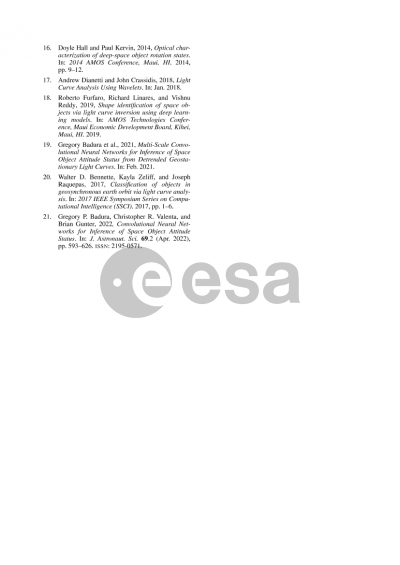Document details
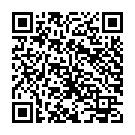
Abstract
The escalating issue of space debris has intensified the need for precise monitoring, especially for determining the orientation, or attitude, of debris. Space debris lacks onboard sensors, so it relies on external observation techniques, with radar and optical telescopes as primary tools. Radar, while effective for space debris observation, is too expensive and power consuming. In contrast, optical telescopes provide light curve observations, which can reveal orientation through brightness changes and are more cost-effective than radar systems. However, applying the established Light Curve Inversion (LCI) method, originally effective for deducing the shape and attitude of asteroids, to space debris has limitations due to debris’ complex shapes and unpredictable reflective properties.
To address the limitations of traditional optical telescopes, which typically operate independently, this research introduces the concept of multistatic light curves. Inspired by radar systems, multistatic observations use multiple optical telescopes to observe the same target simultaneously from different locations. This synchronized, multistatic setup enriches the observational geometry, providing a broader range of data from various perspectives, which enhances the possibility to infer debris attitude accurately. By capturing data with greater spatial diversity, this approach improves the overall informational content of light curve observations, making them more effective for attitude determination.
To further advance these capabilities, this research develops a novel observability metric aimed specifically at improving light curve-based attitude determination for space debris. The observability metric, based on Fisher Information Matrix, offers an impartial measure of the informational value contained in light curve data, enabling a systematic assessment of how much attitude information can be derived from given observational setups. Unlike previous approaches that focused only on the observability of individual brightness observations, this study extends the analysis to consider temporal sequences and multistatic observations. This observability metric provides a comprehensive evaluation by quantifying the amount and quality of attitude information achievable with different observation configurations.
Extensive simulations based on an ideal single-facet target illustrate how this observability metric performs under various observational geometries. Results show that specific geometric configurations yield higher observability values, increasing the potential to infer the initial attitude of space debris accurately. By identifying configurations that maximize observability, this research offers a strategic approach for selecting the most informative observation setups, thereby setting a foundation for future light curve observation systems and improved attitude estimation methods. With these insights, data quality can be anticipated based on the selected observational geometry, allowing for more informed design and deployment of telescope networks.
In summary, this research introduces an observability metric that quantifies the attitude information attainable from light curve data for complex space debris, providing a quantitative tool to optimize light curve observation systems. Serving as a benchmark for designing future observation setups, the metric supports more accurate and reliable space debris characterization. Our presentation will briefly explain the principles of this metric and highlight simulation results based on an ideal single-facet target, covering scenarios such as single and dual observers, while both a single-epoch observation and time-series observations accounting for rotations are considered.
Preview
